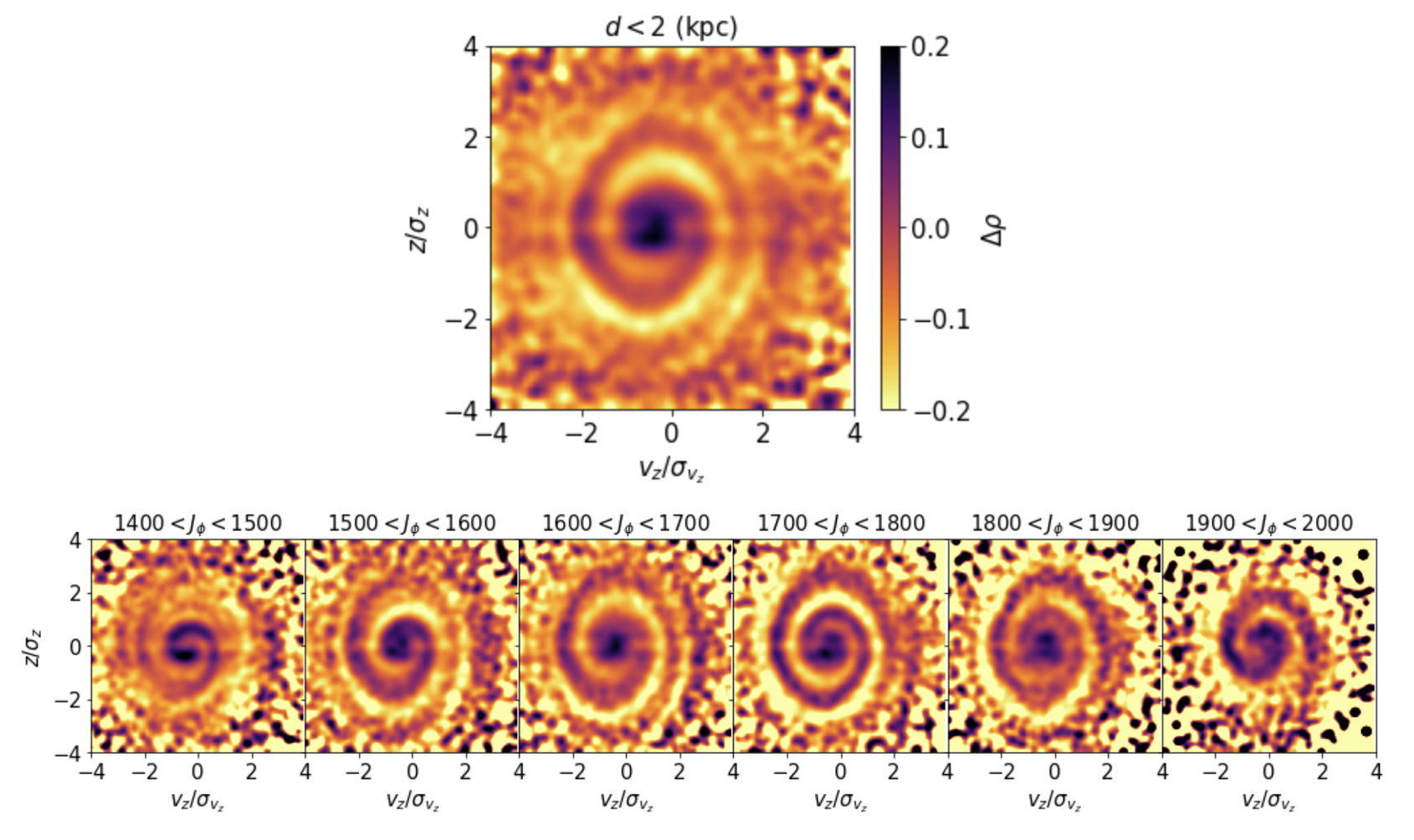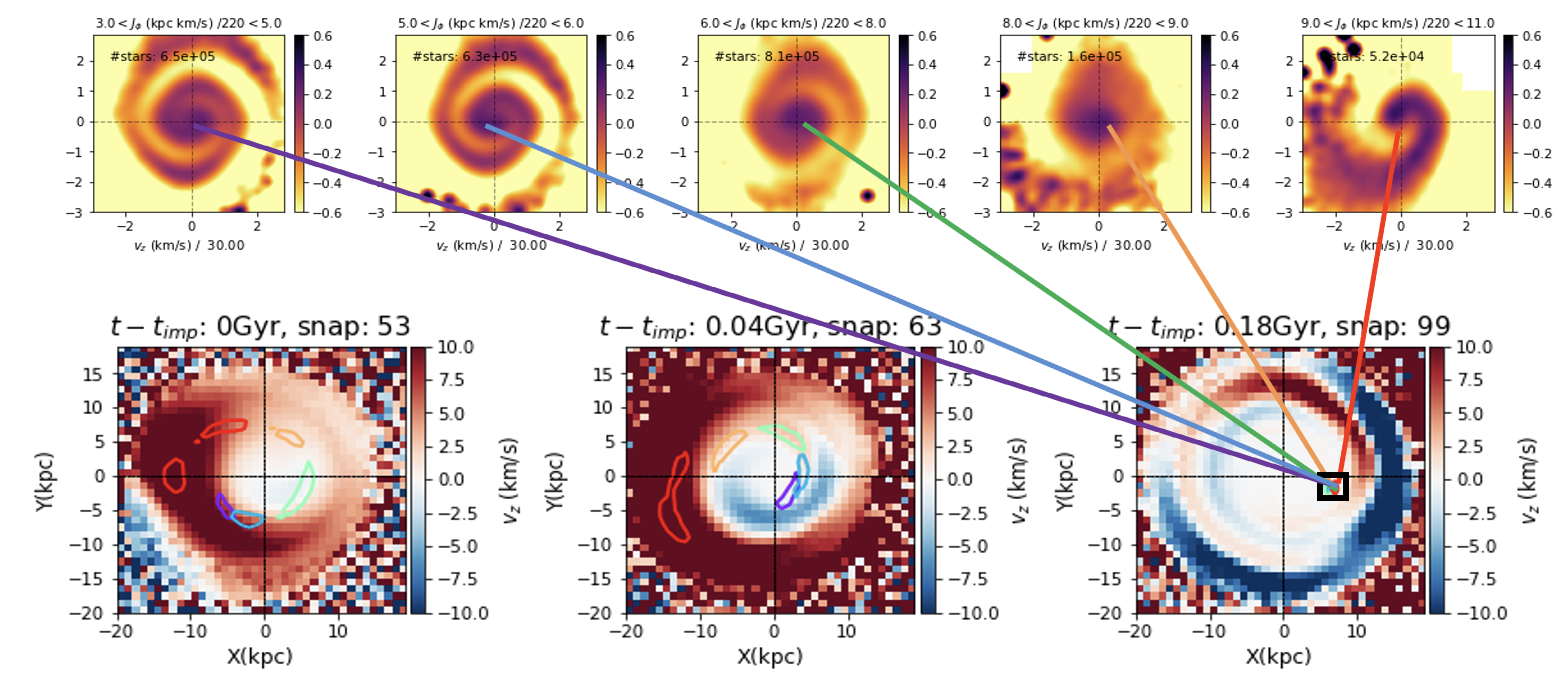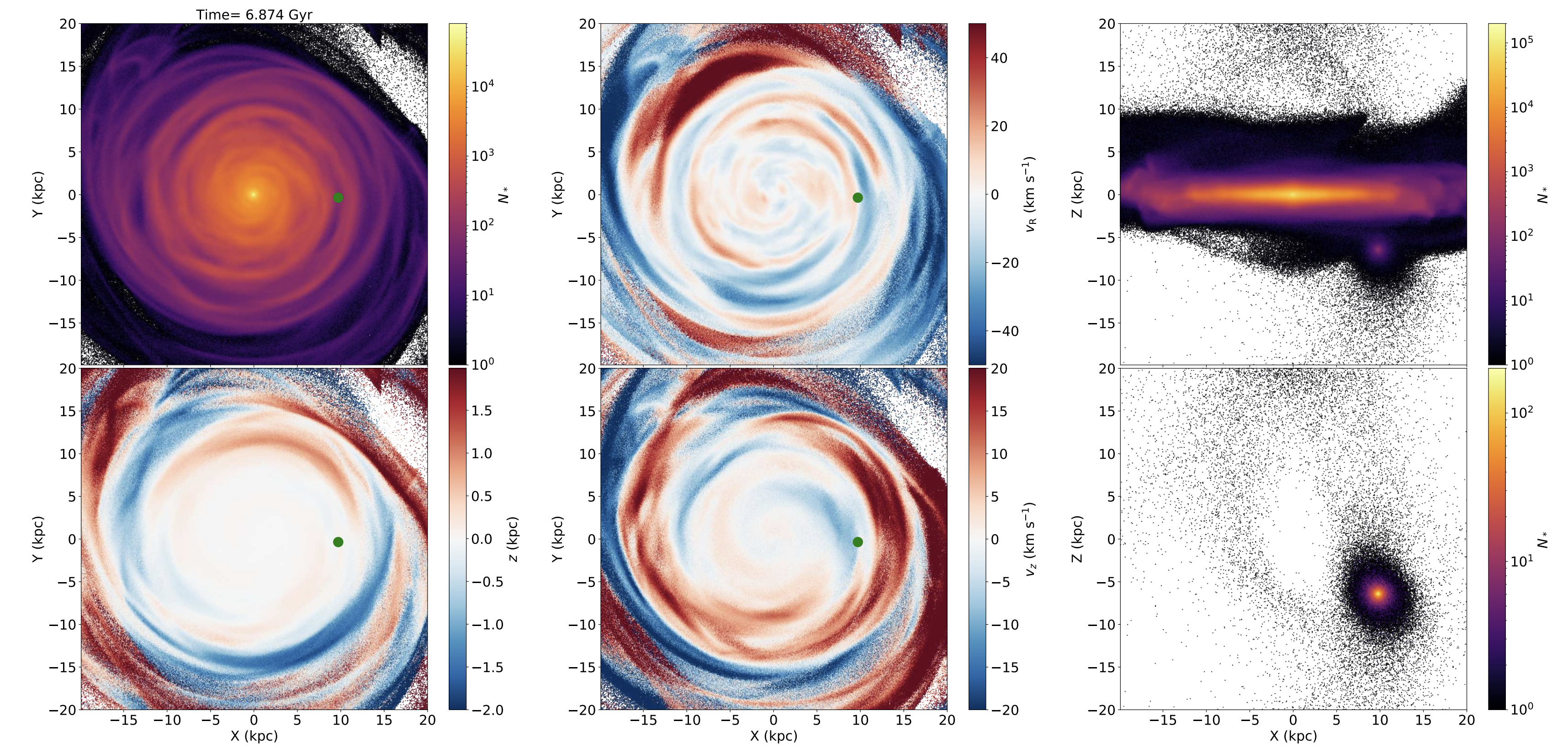The impact of satellite mergers on the Milky Way disc
The second data release (DR2; Gaia Collaboration et al. 2018) from the European Space Agency’s Gaia mission (Gaia Collaboration et al. 2016) highlighted just how far out of equilibrium our Galaxy is. For example, Antoja et al. (2018) showed for the first time the striking spiral, or snail shaped pattern in the z − vz plane (see top panel of Figure 1). This 'phase spiral' is an indication of ongoing vertical phase mixing in the Milky Way's disc. It has been proposed to arise from the interaction of the Milky Way with the Sagittarius dwarf galaxy, henceforth Sgr (e.g. Antoja et al. 2018; Laporte et al. 2019; Khanna et al. 2019), or by the buckling of the Galactic bar (Khoperskov et al. 2019), although the lack of an age dependence in the phase spiral argues against this origin (Laporte et al. 2019).
The spiral seen in the Solar neighborhood is actually a superposition of many different phase spirals, because the Solar neighborhood contains stars on a myriad of different orbits, which were spread across the disc during whatever perturbation induced the phase spiral. For example, the below Figure shows the phase spiral from Gaia (upper panel) split by angular momentum (lower row), producing morphologically different spirals. It's easiest to see if you compare the far left and right panels, but it changes consistenty across angular momentum bins (e.g. Li 2021, Gandhi et al. 2021, Hunt et al. 2021).

z-vz data for stars in the Solar neighborhood in Gaia eDR3. The top row shows the full sample and the bottom row shows the sample split into distinct angular momentum bins (Gandhi et al. 2021).
This is because the Solar neighborhood contains stars on may different orbits, that have different orbital frequencies and eccentricities, and that were in different parts of the disc at the time of the perturbation, regardless of it's origin. For example, the below Figure shows a model from Gandhi, Johnston, Hunt et al. (2021), where the stars in the Solar neighborhood (lower right panel) are split into angular momentum bins, and we plot the phase spiral in different bins (upper row) similar to the above Figure. The left hand and middle panels from the lower row show where the stars from these angular momentum bins were 180 Myr (left) and 40 Myr (middle) ago, spread far across the disc. This lets us in effect view how the spiral behaves at different physical radii, which should inform us both on the Galactic potential and the nature of the satellite interaction.

However, the above model consists of a disc of tracer particles perturbed by a plummer sphere potential. In reality, the self gravity of the disc and Halo will play a part in the formation and evolution of the phase spiral (e.g. see Darling & Widrow 2019), and so will the disruption of the satellite. Thus, in Hunt et al. (2021) we present a 109 particle live N-body model of a satellite merging into an otherwise stable Milky Way-like disc. The below Figure shows the 'present day' morphology and kinematics of the model, and the animation shows the evolution of the disc over time.

Face on (left and centre columns) and edge on (right column) view of a disc galaxy undergoing a merger with a dwarf, colfored by number count (upper left panel and right column), mean radial velocity (upper centre), mean vertical position (lower left) and mean vertical velocity (lower centre). The dwarf particles are only included in the right hand column, but its position is marked with a green dot in the face on panels (Hunt et al. 2021).
Time evolution of the above figure. If your browser will not display the movie, there is a gif available here
This high resolution merger model allows us to explore the formation and evolution of the phase spirals in a self-gravitating disc. The below move shows the z-vz plane in 1 by 1 kpc bins across the disc. They start out smooth, e.g., phase mixed. At approximately 2.4 Gyr the satellite passes for the first time, and you can observe the distributuions being perturbed. They then proceed to wind up into two armed spirals. Subsequent satellite passages create more chaotic features dominated by one armed spirals. This is owing to the changing nature of the interaction. In the initial passage, then interaction is rapid, almost impulsive. Later interactions are extended, exerting a consistent pull on the disc. The rapid transit induces a breathing mode, and the slower transits incude bending modes, as expected (see Hunt et al. 2021 for the full explanation).
Time evolution of z-vz phase spirals in 1 kpc by 1 kpc bins across the disc. If your browser will not display the movie, there is a gif available here
© J. Hunt. All rights reserved. | Plots by J. Hunt unless otherwise specified | Design by TEMPLATED.